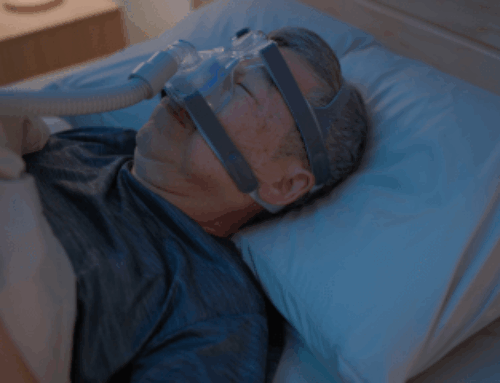EMBARGOED FOR RELEASE: 3 p.m. EST, February 14, 2014
CONTACT: Lynn Celmer, 630-737-9700, ext. 9364, lcelmer@aasm.org
DARIEN, IL – A new study provides evidence that obstructive sleep apnea (OSA) is highly prevalent in people with multiple sclerosis (MS), and it suggests that OSA may be a contributor to fatigue – one of the most common and debilitating symptoms of MS.
Results show that one-fifth of MS patients surveyed in a large tertiary MS practice carried a diagnosis of OSA, and more than half were found to have an elevated risk for OSA based on a validated screening tool. Further analysis showed that OSA risk was a significant predictor of fatigue severity, even after adjusting for potential confounders such as age, gender, body mass index (BMI), sleep duration, depression, and other nocturnal symptoms.
“OSA may be a highly prevalent and yet under-recognized contributor to fatigue in persons with MS,” said lead author and principal investigator Tiffany J. Braley, MD, MS, an Assistant Professor of Neurology from the University of Michigan Multiple Sclerosis and Sleep Disorders Centers in Ann Arbor, Mich. “Our study suggests that clinicians should have a low threshold to evaluate MS patients for OSA and other underlying sleep disturbances.”
The study results appear in the Feb. 15 issue of the Journal of Clinical Sleep Medicine, which is published by the American Academy of Sleep Medicine.
“Obstructive sleep apnea is a chronic illness that can have a destructive impact on your health and quality of life,” said American Academy of Sleep Medicine President Dr. M. Safwan Badr. “People with multiple sclerosis who are found to have a high risk of OSA should be referred to a board certified sleep medicine physician for a comprehensive sleep evaluation.”
Braley and her colleagues, Benjamin M. Segal, MD (Director of the University of Michigan Multiple Sclerosis Center), and Ronald D. Chervin, MD, MS, (Director of the University of Michigan Sleep Disorders Center) studied 195 MS patients who completed a sleep questionnaire designed by the authors and four validated instruments that assessed daytime sleepiness, fatigue severity, insomnia severity and OSA risk. Medical records also were accessed to examine clinical characteristics that may predict fatigue or OSA risk.
According to the authors, the cross-sectional design of the study did not allow for an examination of cause-and-effect relationships. However, assuming that OSA can play a causal role in the development of fatigue, the results raise the possibility that a substantial portion of fatigue experienced by MS patients could be eliminated by the diagnosis and successful treatment of OSA.
The National Multiple Sclerosis Society (NMSS) estimates that approximately 400,000 people in the U.S. have MS, making it the most common disabling neurological disease of young adults.
The AASM reports that OSA is a common sleep disorder that affects up to seven percent of men and five percent of women. It involves repetitive episodes of complete or partial upper airway obstruction occurring during sleep despite an ongoing effort to breathe. The most effective treatment option for OSA is Continuous Positive Airway Pressure (CPAP) therapy, which helps to keep the airway open by providing a stream of air through a mask that is worn during sleep.
To request a copy of the study, “Obstructive Sleep Apnea and Fatigue in Patients with Multiple Sclerosis,” or to arrange an interview with the study author or an AASM spokesperson, please contact Communications Coordinator Lynn Celmer at 630-737-9700, ext. 9364, or lcelmer@aasm.org.
The monthly, peer-reviewed Journal of Clinical Sleep Medicine is the official publication of the American Academy of Sleep Medicine, a professional membership society that improves sleep health and promotes high quality patient centered care through advocacy, education, strategic research, and practice standards (www.aasm.org). The AASM encourages patients to talk to their doctor about sleep problems or visit www.sleepeducation.com for a searchable directory of AASM-accredited sleep centers.




